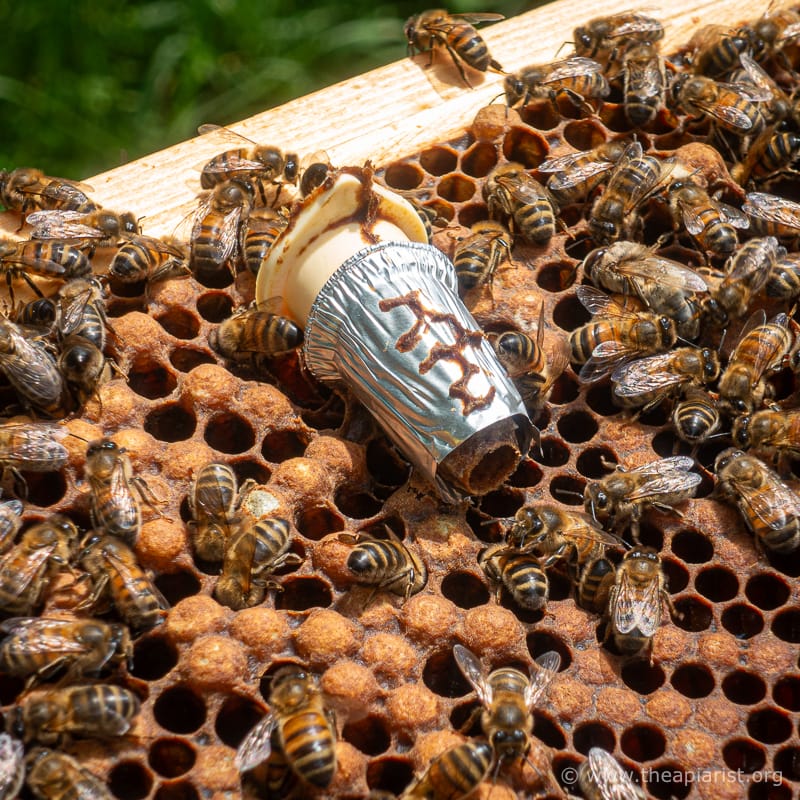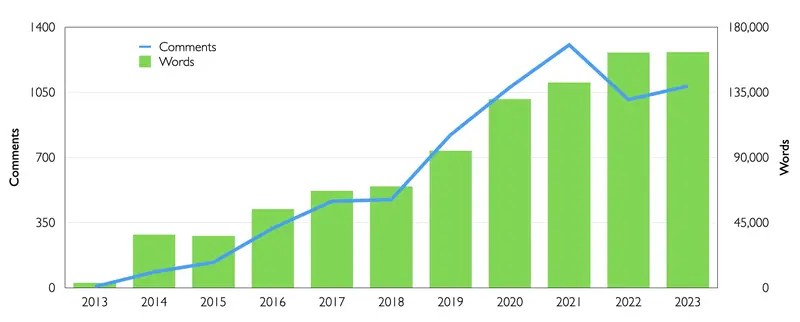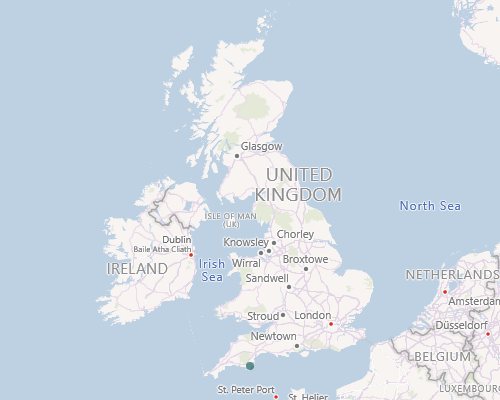The Apiarist in 2023
Synopsis: The annual review of the year on The Apiarist. What, when, where? What’s popular and what’s not … and what does this tell us about the state of beekeeping?
Introduction
One of the rewarding aspects of keeping bees in temperate northern climates are the changing seasons. The cool springs and the – always surprising – fast expansion of our colonies for the early nectar flows, the endless summer days with the incessant droning accompaniment of bees foraging from dawn ’til dusk, the cooler mornings, heather flow and spectacular autumn colours, and then the long, cold, wet, dark winters.
As a beekeeper it makes for a lot of work between April and September. But it’s what I’d consider ‘honest’ work; skilled, physically hard, intellectually challenging, rewarding.
Done well, deeply rewarding.
With the honey safely stored, the colonies fed, miticides applied and roofs strapped down, it leaves several months to focus on other priorities. Now is time for family and friends, an opportunity to tick off some things from that long-ignored ‘To-Do’ list, or to indulge in other hobbies and interests.
But … the beekeeping blogger gets no such break.
A Friday deadline in late December is fundamentally the same as one in mid-June.
Time and tide waits for no man.
Beekeeping on the world wide web is a full-time activity.
However, the great part of the world wide web is that it’s geographically agnostic.
You can be “in when you’re out”.
I can write anywhere and can schedule posts anytime. I could have written this review of 2023 on a miserable, grey winter’s day, huddled in a blanket while struggling sniffily with a respiratory tract infection.
Alternatively, it might have been penned in February between daiquiris and kite surfing sessions on Fuvahmulah beach in the Maldives … where the temperature was 29°C and the tides are insignificant.
Based on the content of the post I’ll let you guess which it was.
A review of the 2023 season
I’ve not got much more to add to the post I made way back in August bemoaning explaining the woeful summer honey crop.
In addition, perhaps more than in recent years, there appears to have been more geographic variation this season.
I often ask organisers during the setup for my talks ‘How did the season go?’
Some appear to have had a bonanza year, others a soggy disaster.
If beekeeping is anything, it’s local.
My disappointing summer honey yield was bookended by an excellent spring crop – the best I’ve had since 2015 both in overall weight and weight/hive – and a pretty respectable heather crop.
Pretty respectable that is for bees kept in a region that is at best (in my view) borderline for heather honey production. I’ve still to extract all the heather honey, but it’s clear I got more heather than blossom, all of which has already been sold.
Queen rearing was reasonably successful. At least, it was for the queens that got out and mated before the heavens opened in late June. The two to three week deluge that followed put an end to both honey bee hanky-panky and nectar gathering.
Make hay while the sun shines.
Mistakes were made, lessons were learnt.
Several for the nth time.
I had some fun trying new (to me) queen rearing methods. Some worked, some will work better now I’ve reviewed what went wrong.
I dabbled usefully with enforced supersedure – with some success – and will definitely be investigating this more in future seasons.
Finally, mite levels have been consistently low and I’m feeling very positive about the health of colonies I’m overwintering.
Bring it on!
Top of the posts
OK, enough beekeeping reality … what about the remaining 93% of my ‘beekeeping’ year?
What’s been read on The Apiarist this year? Which posts have been popular? What topic has generated the most comments?
And what’s been ignored, unloved and unread, left languishing in a dusty digital corner?
This is usually the last post of the season. However, since I want to write about something else next week, this only covers the 50 posts that have already appeared this year.
Those 50 posts already total over 163,000 words, an average of more than 100 words/post over the, already prolix, ~3100 words/post in 2022.
Comment numbers are also up on 2022 and, since not all of them are telling me of the things I got wrong in the posts, I welcome the discussion and am grateful.
I hugely appreciate the hundreds of readers who have made constructive, insightful, informed and interesting comments on the topics I have covered. Some comment once and disappear forever. Others are regular contributors. All are welcome and valued.
Of course, despite the ephemeral nature of blogging, a review of the most read posts/topics of this year has also to consider posts that were written in previous seasons.
In fact, four of the top 10 posts were written 4-5 years ago. These are topics that have stood the test of time and could be considered the last word on the subject.
Or perhaps they are just the last word I made on the topic.
Not the same thing at all.
Alternatively, perhaps these posts are so fundamentally wrong that everyone reads them to simply have a good laugh.
I can’t tell from the stats.
In reverse order …
Like all good award ceremonies I’ll keep you waiting for the top rankings.
Ooh, the suspense!
There are effectively two overlapping lists; the most read posts of 2023 and the most read posts from 2023.
I’m only going to consider the ‘top 10’ of either, and 6 of the posts appear on both lists anyway. I’ll therefore briefly deal with positions 10, 9, 8 and 7 of posts made in 2023 which failed to get into the top 10 ‘overall’ list. These are effectively the ‘also rans’.
The also rans
Site and smell (2023): where should bait hives be sited to attract swarms from your own apiaries? The smell part of the badly punned title referred to experiments I made painting the inside of bait hives with a wax/propolis mix. This was disappointingly unsuccessful, though ‘one or two empty bait hives does not a failure make’ {{1}}, at least statistically speaking.
Dancing in the dark (2023): a science-rich analysis of the complexity and inherent errors of the waggle dance … or an example of me ‘thinking aloud’ during a cold, late spring, desperately hoping things would pick up for the OSR. It did. Surprisingly popular considering the content. Perhaps readers thought it was a prequel to the next post?
Adultery (2023): disappointingly dull content considering the lurid title. A discussion of the recent EU review of ‘fake honey’. This topic regularly gets aired on social media, usually by beekeepers who haven’t read the EU report (or my post). There was a recent ‘Breakfast Directives’ amendment vote in the European Parliament on this topic. EU law will change and (Quelle surprise) the UK honey packers don’t like it. I’ll be writing more about QR codes and the provenance of honey next year.
Supersedure (2023): one of the most interesting and least understood aspects of queen bee biology. At least to me and by me. I’m sure someone understands why the queens do not fight … more on this next year.
The top 10 (not on the podium)
10 The ultimate hive stand? (2022): clickbait titles do work. This is no more the ‘ultimate’ hive stand than a stack of old tyres. However, it does work well. Here’s my “Top Tip for ’24” … don’t read any beekeeping posts titled ‘The 10 best [anything]’. Most will carry advertising, have been written by ChatGPT and will be nonsense. That’s and, not or.
9 Coordinated Varroa control (2023): often recommended, almost never implemented. Go on, give it a try. We did the science so beekeepers could have something else to disagree about.
8 Swarm control – it’s not rocket science (2023): poorly taught in most beekeeping winter courses everywhere. An overview of the principles and practice.
7 Ready, steady, GO! (2023): some early season musings on the first inspections of the season, brace comb and queen ‘issues’.
6 Good times ahead (2023): a 3,017 word warning published in mid-February to not open hives too early. Also a discussion and some (swanky poor) animated graphics illustrating aspects of phenology, something I intend to return to next year.
5 How to start beekeeping (2023): a post written with the intention of reducing the ‘churn’ of new beekeepers who give up within 12-18 months. Did it work?
4 The best laid plans (2023): another surprisingly popular post focusing on the interesting, albeit indisputably niche, topic of ambient temperatures and OSR nectar yield. You lot need to get out more.
Bronze
3 Demaree swarm control (2019): written – as pointed out to me recently – as applied reactively not proactively. So probably not the Demaree method at all. However, whether right or wrong, it remains unpopular with me because of the large number of drones that get stuck at the excluder. This post was placed 4th last year.
Silver
2 Mad honey (2018): surreal, totally surreal. An article about hallucinogenic honey (see what I did there?). Largely irrelevant to UK beekeepers; if I can’t make it with the acres of rhododendron I’ve got on the west coast, then no-one can.
Read – with disappointment – by ~40 stoners a day, every day. Also placed 2nd last year … but read more often this year {{2}}.
Gold
1 Queen cells … don’t panic! (2018): topping the tables for the 4th year running. I think the continuing popularity of this post tells me more about the problems beekeepers face, presumably mostly (at least I hope mostly) new beekeepers, than anything else. I think it also tells me it should be behind a paywall for next year. This post alone attracted ~3% of all traffic to the site in 2023.

Queen
What can I conclude from this list?
Not much really. The readership of this site has a wide range of beekeeping experience – from outright beginners to those with decades of ‘hive time’. The topics I cover span cover everything from hardcore science, largely impenetrable to readers who aren’t rocket scientists {{3}}, to asinine ramblings seemingly written by someone who has consumed a jar of mad honey.
Some posts appeal to beginners, some to experienced beekeepers … and apparently some to almost nobody. Of the 561 posts I’ve written over the last decade, one – ironically the equivalent post to this one back in 2021 – was only read 19 times.
I don’t have a target audience. Writing exclusively for beginners would end up getting dull and repetitive. For me and them. There’s a good index and I try and refer back to relevant previous posts rather than just retyping stuff.
Similarly, the problem with just covering the ‘bleeding edge’ of scientific topics relevant to beekeeping is that they’re sometimes not relevant to practical beekeeping.
And, it subsequently turns out, they’re sometimes not even correct.
So, it’ll remain as a potpourri … with the recklessly ambitious intention of keeping all of the people happy some of the time.
Readers, subscribers, hackers and bots
Reader numbers are up 20% on 2022 but they’re each reading less as page views have only increased by about 13%.
Subscriber numbers – those receiving an email notification of new posts – are also up significantly, but WordPress deliberately obfuscates this information {{4}} so it’s time-consuming to get any meaningful figures out.
Who cares? I do, but more on that next week.
What’s also up are the number of ‘bad actors’ intent on either hacking the site, advertising on the site (typically botox treatments, asian brides or fake sunglasses) or ‘scalping’ the content. These are manifest as thousands of failed login attempts, hundreds of spam comments and dozens of ChatGPT-bot visits.
Those figures are per day.
Today – a quiet Sunday – there have been 342 attempts to post content, 129 spam comments, 663 failed logins, over 2,500 unwanted bot visits and a couple of dozen ChatGPT visits {{5}}.
Bona fide readers (at least as far as I can tell) either arrive here from the email notification I send announcing new posts, via Google (unsurprisingly the majority) or another search engine, or from Facebook, Pinterest or Twitter X.
Interestingly, though not surprising considering recent issues, X generates dwindling amounts of traffic (a couple of thousand visits a year). Increasingly X is a toxic cesspool of conspiracy theories and misinformation. This website tries to avoid the former and would prefer not to be associated with the latter. It’s probably no longer worth announcing new posts on X, or for that matter on Instagram, Mastodon, Bluesky, Threadz or Truth Social.
Supporters
Writing takes time.
Writing 163,000 words takes a long time, even if it’s in broken down into 3,000 word chunks.
Weekly posts might start as a kernel of an idea months beforehand. Unlike my school and college dissertations I often do a lot of reading around the topic before starting to write.
Posts appear every Friday and are rarely started more than a week before the publication date.
Topicality helps keep the content relevant.
Or at least less irrelevant.
In the summer, with long days spent beekeeping (or hillwalking, canoeing, kite surfing and drinking daiquiris), posts are usually written after dark … and in midsummer this means between 11 pm and 3 am.
Of course, in winter they’re always written in the dark. Sunrise today was just before 9 am and the sun set well before 4 pm.
I’m therefore grateful to the supporters who have Bought me a Coffee to fuel these writing marathons. These have helped stave off my slumping insensible over the keyboard, dribbling and mumbling incoherently {{6}}. Any funds not converted into milligrams of caffeine are used to offset the software and server costs (see below) needed to produce and deliver the site.
You can support the site and my writing using the buttons in the right-hand margin, or by pointing your phone at this clever QR code which works in a similar way to my labelling system for honey provenance.
I’m particularly grateful to those supporters who have made repeated or regular donations. You know who you are. This site probably would not exist without your help.
Thank you.
Out of sight, out of mind
Posts are written in Markdown using Obsidian, referenced where needed with Zotero, illustrated using photographs managed and processed in Lightroom or Photoshop, with graphics prepared in Keynote or Inkscape … or using my craptastic™ hand-drawn scribblings.
The site is a self-managed WordPress installation running on an AWS server behind a Cloudflare firewall and CDN. Where needed – and believe me, it’s needed – automation (of a sort) is achieved using my badly written custom perl scripts.
If none of that last paragraph means anything to you then I’m in good company. It meant nothing to me before I started all this.
If there are any gaps in the seamless transition from an interesting germ of an idea to a polished Friday afternoon post, it’s due to criss-crossed lashings of duct tape …
… and lots of coffee.
Thank you again.
Happy Christmas
Any readers who have got this far are either:
- waiting for their Christmas guests (friends and family … sometimes even one and the same thing) to arrive so they have an excuse to open the sherry or go to the pub
- desperately avoiding the teetering pile of dishes that they should be washing or drying, while instead browsing the web and eating a third – or is it fourth? – mince pie, or
- enjoying their second daiquiri on this gorgeous late February afternoon while catching up with some beekeeping reading from the last year or so
If that last one applies to you, take a look along the beach … I’m on the lounger over by the palm trees. Yes, that’s me, wearing a floppy hat and a hideous pair of board shorts. My incognito ‘bee blogger’ outfit.
Don’t interrupt me. I’m writing my “end-of-the-year from the end-of-the-beach” post for next December. I’m struggling, not because I’m short of things to write about (it’s a post on the apparent rarity of the solitary bee Megachile laticeps in the central atolls of the Maldives; see Biella et al., 2022), but because the sun is so bright I can barely see the screen.
Or perhaps it’s the daiquiris?
This beekeeping blogging malarky is tougher than it looks.
Wherever you are this holiday season – at home, with family, at work or even on the beach – take it easy, don’t meddle unnecessarily with your bees, build some frames and plan for the season ahead.
Happy Christmas!
Notes
As an aside, Obsidian has been a complete revelation as a note-taking and writing app, replacing the more-than-competent Ulysses. Obsidian is stable, well-supported, open source and runs on any platform – Mac, Linux, Windows, Android, the toaster etc. For basic usage, unlike most of the other things mentioned above, it is ‘free as in beer’ but there are monthly fees for sync and publishing. If you write anything – shopping lists or novels – it might be worth a look.
References
Biella, P., Ssymank, A., Galimberti, A., Galli, P., Perlík, M., Ramazzotti, F., et al. (2022) Updating the list of flower-visiting bees, hoverflies and wasps in the central atolls of Maldives, with notes on land-use effects. Biodiversity Data Journal 10: e85107 https://bdj.pensoft.net/article/85107/.
{{1}}: With apologies to Aristotle.
{{2}}: Though perhaps by the same person time and time and time again.
{{3}}: Other than the post placed 8th … obviously.
{{4}}: Why? They are my subscribers!
{{5}}: And it’s not yet early evening.
{{6}}: It happens, but I usually manage to schedule the post before it does.









Join the discussion ...